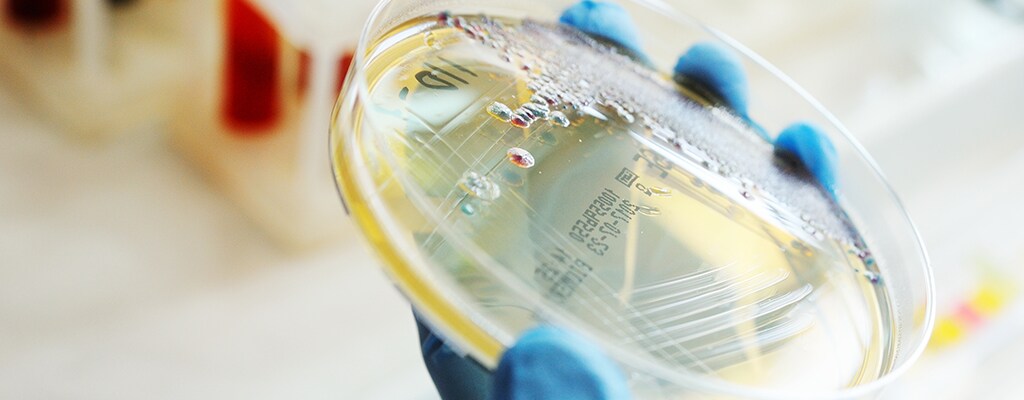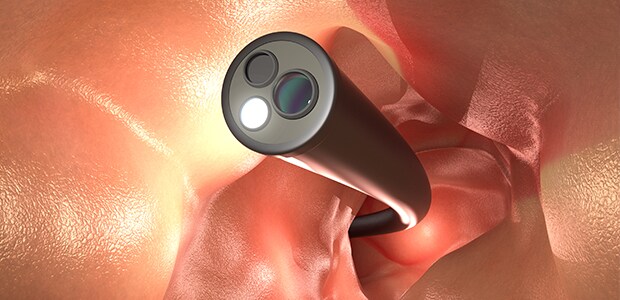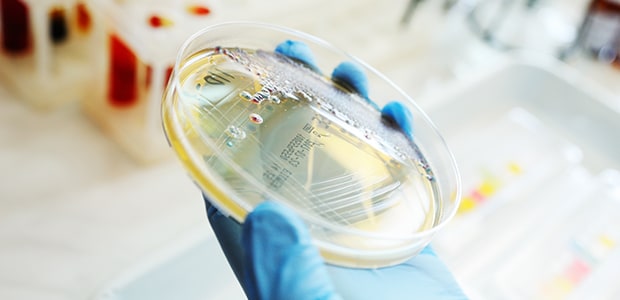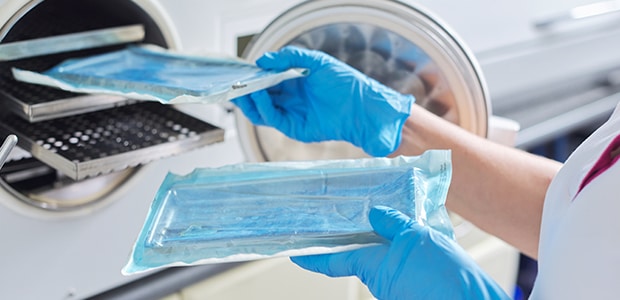
White Paper
Safety Considerations for Medically Invasive Pressure Sensors
The use of invasive pressure sensors for patient care is growing. Several hundred thousand single-use invasive sensors are used around the world each year to measure pressure in the cranium as well as the heart.

As improved sensor technology becomes available, new devices are being developed to address a host of additional indications. Benefits of pressure sensing for many medical situations is well understood, but new users must also be concerned about possible detrimental effects of introducing new technology into the anatomy. In this paper, we review safety standards for biocompatibility and safe limits on electrical currents used in-vivo and describe methods by which both standards can be met.
The use of invasive pressure sensors for patient care is growing. Several hundred thousand single-use invasive sensors are used around the world each year to measure pressure in the cranium as well as the heart. As improved sensor technology becomes available, new devices are being developed to address a host of additional indications. Benefits of pressure sensing for many medical situations is well understood, but new users must also be concerned about possible detrimental effects of introducing new technology into the anatomy.
Invasive pressure sensors are currently used in three main applications:
- Measurement of restrictions in the coronary arteries, in a procedure called fractional flow reserve or FFR1
- Measurement of the pressure inside the cranium, or intracranial pressure monitoring
- Pulmonary artery measurements to monitor heart failure.
As these sensors become easier to work with, additional applications are in development. The sensors most commonly in use today are MEMS sensors, fabricated from silicon, that make use of the Wheatstone Bridge principle. The sensor is essentially a block of silicon with a thin silicon membrane. Changes in pressure cause deflection of the membrane, which in turn generates a small voltage that is proportional to the pressure on the membrane.
Signal processing is typically employed to filter out electrical noise as well as compensating for changes in temperature, which also affect the output of the sensor. These sensors are typically mounted in guidewires, catheters, endoscopes or other fully-functional medical devices.

First, the good news: The addition of pressure sensing capability to catheters and endoscopes has become simpler, due to advances in assembly technology. As medical device designers tackle new treatment options using in-vivo sensors, however, an assessment of the safety of each new technology needs to be carried out. Guidance is available: several standards have been published to minimize the risks of introducing new medical devices into the body.
In this paper, we focus on the biocompatibility standard ISO 10993, electrical safety standard IEC 60601-1 and sterilization standard ISO 11135. All three of these are relevant for electrically powered sensors intended for use inside the body. In vivo pressure sensors are not finished medical devices, but instead components that can be mounted in a number of different devices for many different end uses and environments.
One goal of component manufacturers is to de-risk, to the greatest extent possible, their components’ use by final device suppliers. The component supplier can only supply information about known risks arising from the component design, as well as steps taken to mitigate the risks; ultimately, the performance of the final medical device lies with the medical device supplier. However, through up-front de-risking activities at the component level, both the device manufacturer and the patient benefit.
In this paper, some of the known or potential risks of in vivo pressure sensors are listed and some mitigating actions suggested.

Biocompatibility
The term ‘biocompatible’ is a fairly recent construct, and the first definition was cemented in 1985: “The ability of a material to perform with an appropriate host response in a specific application. Perhaps the most important part of this definition is the recognition that there are no biocompatible materials; there are only materials or combinations of materials (devices) that are appropriate for a specific use.
The human body is adept at rejecting foreign substances, and care must be taken by the medical device designer not to arouse a harmful defensive response by the body, or to cause cell damage due to physical or chemical incompatibility. ISO 10993-1 has been recently updated to incorporate a risk-based approach to biocompatibility testing. This means that each device maker must assess the risks appropriate for their particular device and use case, and mitigate these risks to the greatest practical degree.
The new standard seeks to eliminate the ‘check-box’ mentality and replace this with a thoughtful approach to improving patient safety. 10993-1 can be used to de-risk pressure sensing components. While the standard does not describe any specific tests, it does provide a guideline for selecting the most appropriate test for the intended application. Not all biocompatibility tests are relevant for invasive pressure sensors. Below, we list some of the tests that are most likely to be meaningful to device designers. This list assumes the device will be used in circulating blood; devices immersed in other bodily fluids such as urine or cerebrospinal fluid may have a less-demanding set of requirements. In the ISO standard, five categories of hemocompatibility are rolled up into ISO 10993-410.
The first property we will discuss is the tendency of plasma to coagulate. This is a property not only of the materials used in the component’s construction, but also its shape. Generally, any shape that serves to trap blood and prevent its free flow is at risk for causing coagulation. A common in vitro test is described by ASTM F2382-18. The test determines the time citrated human plasma exposed to the test device takes to coagulate when exposed to a suspension of phospholipid particles and calcium chloride. If the coagulation time is known, then the device designer knows the upper limit in time for their particular application – or know that special steps must be taken to prevent the sensor from blood contact in the design. For example, the sensor could be embedded in a soft, smooth plug of silicone or fluorosilicone gel; this will allow the sensor to function but eliminate blood contact to the sensor itself, as well as providing a smooth rather than sharp-cornered profile to the bloodstream. SC5b-9 Complement Activation Assay is a second, indirect method of determining cell damage.

Sharp corners should also be avoided whenever possible – not only because of coagulation but also to prevent accidental cutting of tissue. Again, although the final medical device must be designed with hemocompatibility in mind, it is useful for device designers to know that a component is not, in and of itself, adding risk. Cytotoxicity is addressed in ISO 10993-511. Cytotoxic chemicals or materials are those that induce cell death. The standard references tests that describe methods to ensure that toxic chemicals will not dissolve out of the medical device (and by extension, the components that comprise the device). In the elution method, the device is first soaked in a cell-growth medium.
The surface area of the device and conditions of soaking, including the length of time, are fully specified; after the specified time is reached, the device is removed. In a second flask, cells are grown in the same type of medium. After extensive cell growth, the medium in which the device was soaked is poured in with the growing cells, and the cells are examined for evidence of cell death. ISO 10993-10 points to various tests for determining sensitization. These tests seek to de-risk acute, repeated or long-term exposure of the device to the body’s immune system.
A maximum sensitization test is typically carried out on guinea pigs, who have similar immune responses to skin contact as humans. The medical device is soaked in liquid to form an extract. The animals are injected with a small amount of extract, and two weeks later have patches applied to their skin; the patches contain the same extract. If redness or swelling result, the device is considered a potential allergen. An intracutaneous study uses a similar extract, but in this case small doses are injected under the skin after the initial injection. This is known as the intracutaneous study. Finally, ISO 10993-11 seeks to de-risk systemic effects associated with the medical device.
The standard references several tests corresponding to different means of exposure, i.e. inhalation, ingestion, peritoneal and subcutaneous exposures, etc. Each of these exposure routes has a different set of potential test methods. Most of these tests are performed using fluid extracts (in which the device is soaked in the fluid under specified conditions), but in some cases the device is implanted. Implants are most often used if there is reason to believe the device could degrade inside the harsh environments found in the body. An important subset of 10993-11 are pyrogenic tests, designed to detect the presence of fever upon exposure to the device.
In these tests, extracts are injected into rabbits, and their temperatures are monitored for several hours afterwards. Consistent rise in temperature indicates a risk of pyrogenesis with the device design and materials. The component manufacturer can minimize risks by designing the components only with materials that have a long history of successful use in invasive medical devices, and by minimizing to the greatest extent possible sharp corners and areas in which blood or other fluids can pool and stagnate. These precautions will minimize the potential for toxicity, inflammation, fever and allergic reaction as well as thrombogenesis and coagulation. If each of the standards above are met by a medical device component, it quantifies the capability of the device. It may also highlight areas of risk. This information allows the designer to implement the component in the lowest-risk configuration.

Safe Current Limits
Most commercially-available pressure sensors are powered by an electrical current and deliver a signal in the form of voltage changes. It is suspected that currents as low as 50uA can cause cardiac arrhythmia; for ethical and practical reason the exact values remain unknown. The hazards relating to the introduction of electrical currents into the body constitute a second category of risk. Again, globally-accepted standards have been developed to guide component and device manufacturers.
Compliance with ANSI/AAMI ES1 protects patients from potentially injurious exposure to electrical currents during diagnostic procedures. This standard recognizes that, during normal operation, there is a potential for some amount of current to leak out of a powered device, either through liquid or tissue contact. It also recognizes that devices can fail in various ways, and places limits on the amount of current that the patient will be exposed to as a result of any single point of failure.
To prevent patient injury, the standard limits the amount of current that a patient will be exposed to 10uA during normal operation and 50uA for any single mode of failure. The standard does not apply to therapeutic procedures where, for example, current may be deliberately introduced to ablate or stimulate tissues.
To simplify the design for medical device manufacturers, component manufacturers can ensure compliance to this standard with their components. If the component itself will not violate the standard, then the final device designer does not need to make any special accommodations to ensure the final device is also compliant. One option is to use fiber-optic based sensors in which no current is introduced at all. Optical fiber sensors using Fabry-Perot interferometers are fully compliant with ISO 60601-1, and do not suffer from electrical interference. However, lack of high-volume production methods and concerns over radius of curvature have hindered their widespread adoption.
For electrically-powered sensors, one strategy the component designer may employ is to have their device operate at currents below 10uA, and additionally ensure that the failure of any single component will result in a current through the device that is less than 50uA. We will discuss this strategy in light of pressure sensors below. Typically, commercially available sensors operate at 1.8 to 5.0 volts and have resistances in the 800to 5000 ohm range. This results in operating currents in the 360uA to 6.25mA range, far in excess of ISO 60601-1 requirements.
A different approach is required for in-vivo usage. One recent approach has beento use a series of current-limiting resistors to maintain currents below10uA, coupled with circuit elements to improve signal to noise. An amplifier circuit connected to the sensor output effectively reduces the current flowing through the sensor to zero; in turn, this nullification circuit is used to actually measure the pressure. Experimental results show that the actual current flow stays below 8uA in normal operation. The circuit has been designed so that the failure of any single component, or bridging between any two points, will still maintain a current below 50uA, also in compliance with the standard. Despite the low current, rms noise has been experimentally determined to be < 0.14uV at 24Hz data acquisition rate, leading to acceptable signal to noise.

Sterilization
According to ISO, a sterile device is one that is free from viable microorganisms. Because the complete absence of organisms could be difficult to detect, let alone achieve, the definition is then amended to say that the chances of having viable organisms is less than one per million.
At present, there are three primary paths tosterilization:
- Steam (autoclave)
- Toxic gas (ethylene oxide, hydrogen peroxide, ozone)
- Radiation (Electron beam, gamma rays or x-rays)
Steam sterilization is the most commonly used method for materials that can withstand it, as it is nontoxic, inexpensive and reliable. Proper procedures are described in ISO 1766521. Pressurized steam is both microbicidal as well as sporicidal. However, while ideal for steel surgical components, complex devices using adhesives, plastics and/or rubber seals are generally damaged or destroyed by the autoclaving process. Pressure sensors used in-vivo may contain epoxy or polysiloxane-based encapsulants, neither of which can withstand autoclaving with high reliability. The reader is referred to ISO 1766521 for a full description of accepted methods.

Ethylene oxide gas, or ETO, has the advantage that it will not destroy most materials used in medical devices, and it is sufficiently penetrating that it can be used to sterilize even devices that have already been wrapped in packaging. It also has drawbacks: It is explosive and flammable, and potentially hazardous both to hospital staff as well as the environment. It also requires a cycle time between 1 and 6 hours, under controlled humidity between 40% and 60%, and temperature between 37°C and 63°C; each of these imposes additional cost on the process.
ISO ANSI 11135:2014 describes specific protocols for ensuring the safe and effective use of ethylene oxide gas. First, the components (and any packaging in
which they reside) must be exposed to 47°C and 65% relative humidity for 12 to 72 hours, depending on size. The device must be able to withstand high vacuum,
as a vacuum is required to introduce ETO gas without risking it mixing with air and becoming explosive. Also, the gas is removed by pulling vacuum in several
stages and backfilling with nitrogen, to ensure thorough removal of the gas to levels below 65ppm.
Radiation is an expensive but effective method for medical device sterilization. Gamma ray radiation, using source materials closely regulated by the Nuclear
Regulatory Commission, is the most commonly-used commercial process. It can penetrate several layers of materials and packaging and its effectiveness is
insensitive to moisture, temperature or pressure. Certain plastics, adhesives and rubbers are also embrittled by exposure to ionizing radiation. ISO 11137 consists of several sections describing approved methods for establishing and maintaining safe and effective sterilization methods for medical devices.
Effective dosimetry is a critical part of the process, both to ensure proper sterilization and to prevent harm to operating personnel. Component manufacturers can help minimize risks for device manufacturers by demonstrating that their components continue to function normally after exposure to one or more of the FDA approved sterilization methods. Understanding the performance risks induced by any of these methods could steer sterilization decisions for the final device and avoid costly errors.
Ethylene oxide gas, or ETO, has the advantage that it will not destroy most materials used in medical devices, and it is sufficiently penetrating that it can be used to sterilize even devices that have already been wrapped in packaging. It also has drawbacks: It is explosive and flammable, and potentially hazardous both to hospital staff as well as the environment. It also requires a cycle time between 1 and 6 hours, under controlled humidity between 40% and 60%, and temperature between 37°C and 63°C; each of these imposes additional cost on the process. ISO ANSI 11135:2014 describes specific protocols for ensuring the safe and effective use of ethylene oxide gas. First, the components (and any packaging in which they reside) must be exposed to 47°C and 65% relative humidity for 12 to 72 hours, depending on size. The device must be able to withstand high vacuum, as a vacuum is required to introduce ETO gas without risking it mixing with air and becoming explosive. Also, the gas is removed by pulling vacuum in several stages and backfilling with nitrogen, to ensure thorough removal of the gas to levels below 65ppm. Radiation is an expensive but effective method for medical device sterilization. Gamma ray radiation, using source materials closely regulated by the Nuclear Regulatory Commission, is the most commonly-used commercial process. It can penetrate several layers of materials and packaging and its effectiveness is insensitive to moisture, temperature or pressure. Certain plastics, adhesives and rubbers are also embrittled by exposure to ionizing radiation. ISO 11137 consists of several sections describing approved methods for establishing and maintaining safe and effective sterilization methods for medical devices. Effective dosimetry is a critical part of the process, both to ensure proper sterilization and to prevent harm to operating personnel. Component manufacturers can help minimize risks for device manufacturers by demonstrating that their components continue to function normally after exposure to one or more of the FDA approved sterilization methods. Understanding the performance risks induced by any of these methods could steer sterilization decisions for the final device and avoid costly errors.

Summary
The introduction of electrically-powered equipment into the human anatomy is inherently risky. The body is sensitive to foreign materials, and improperlysterilized devices can carry infection deep into critical organs. Uncontrolled electrical currents can disrupt normal cardiovascular function. It is no surprise that a large body of regulations have arisen around the use of invasive medical devices. For the medical device engineer, the design process must not only result in effective and cost-efficient devices but must also have a demonstrated commitment to risk reduction. Component manufacturers can assist in this effort by providing components that have themselves been de-risked to the greatest practical extent. Together, component and device manufacturers can improve standards of healthcare through careful product design.



